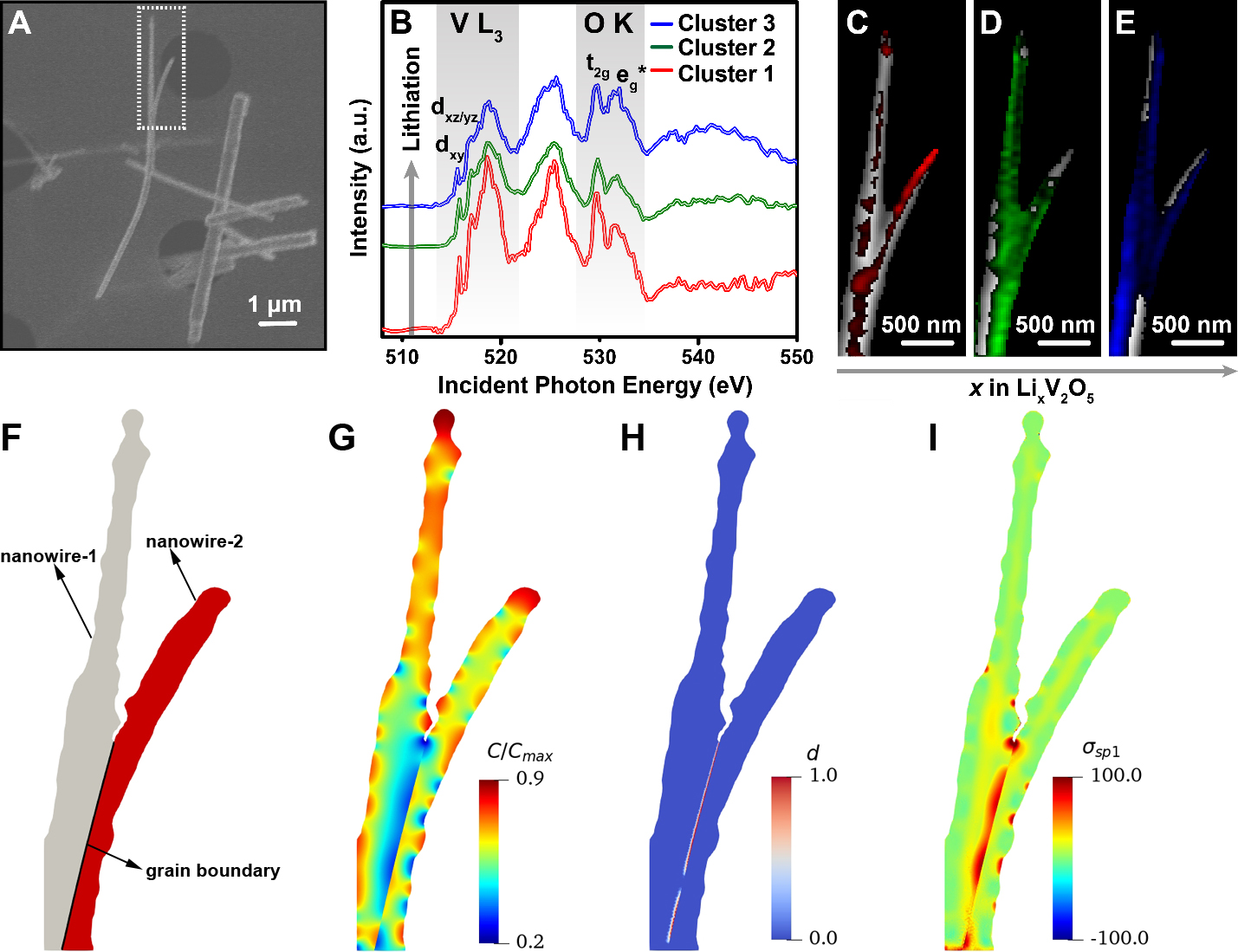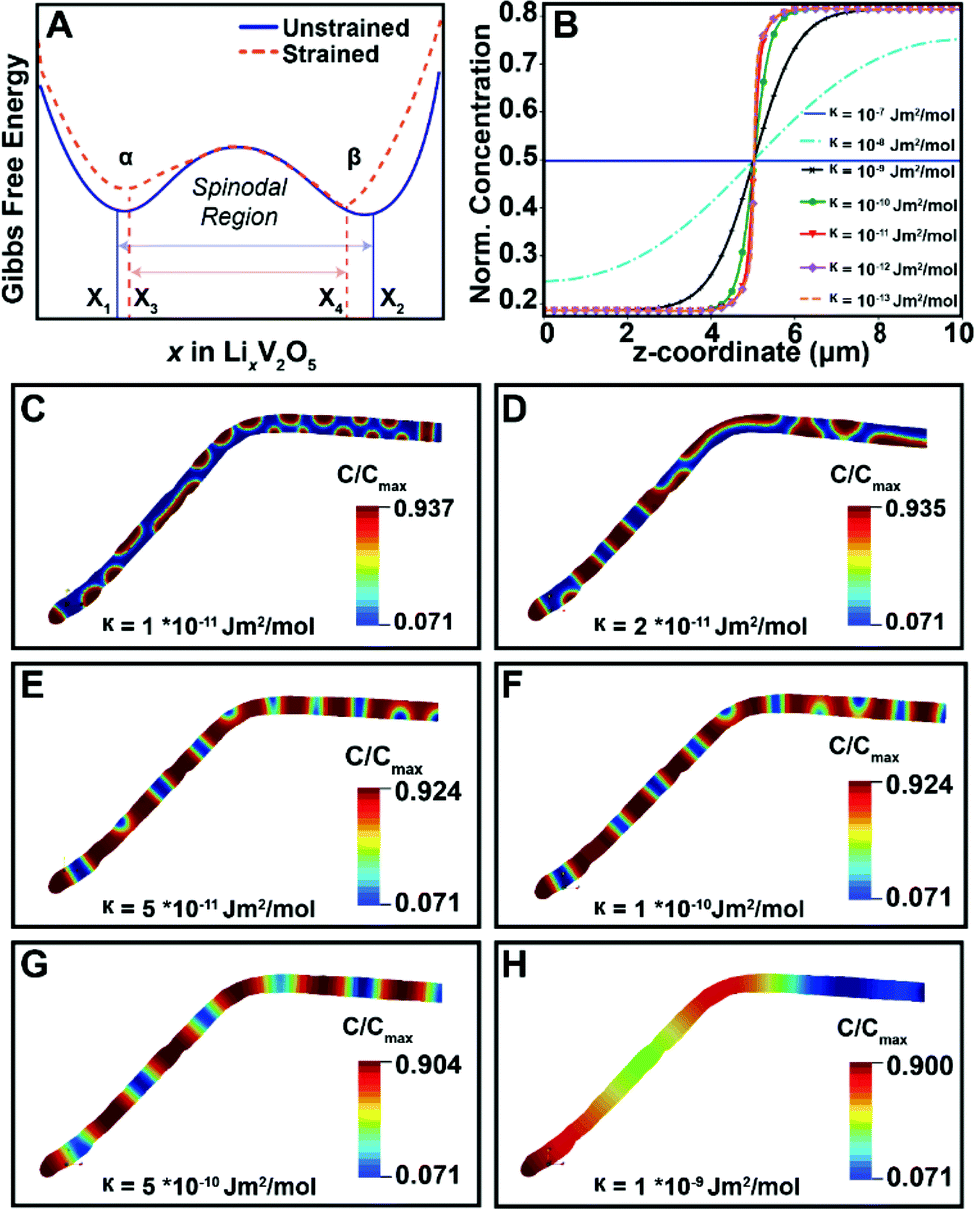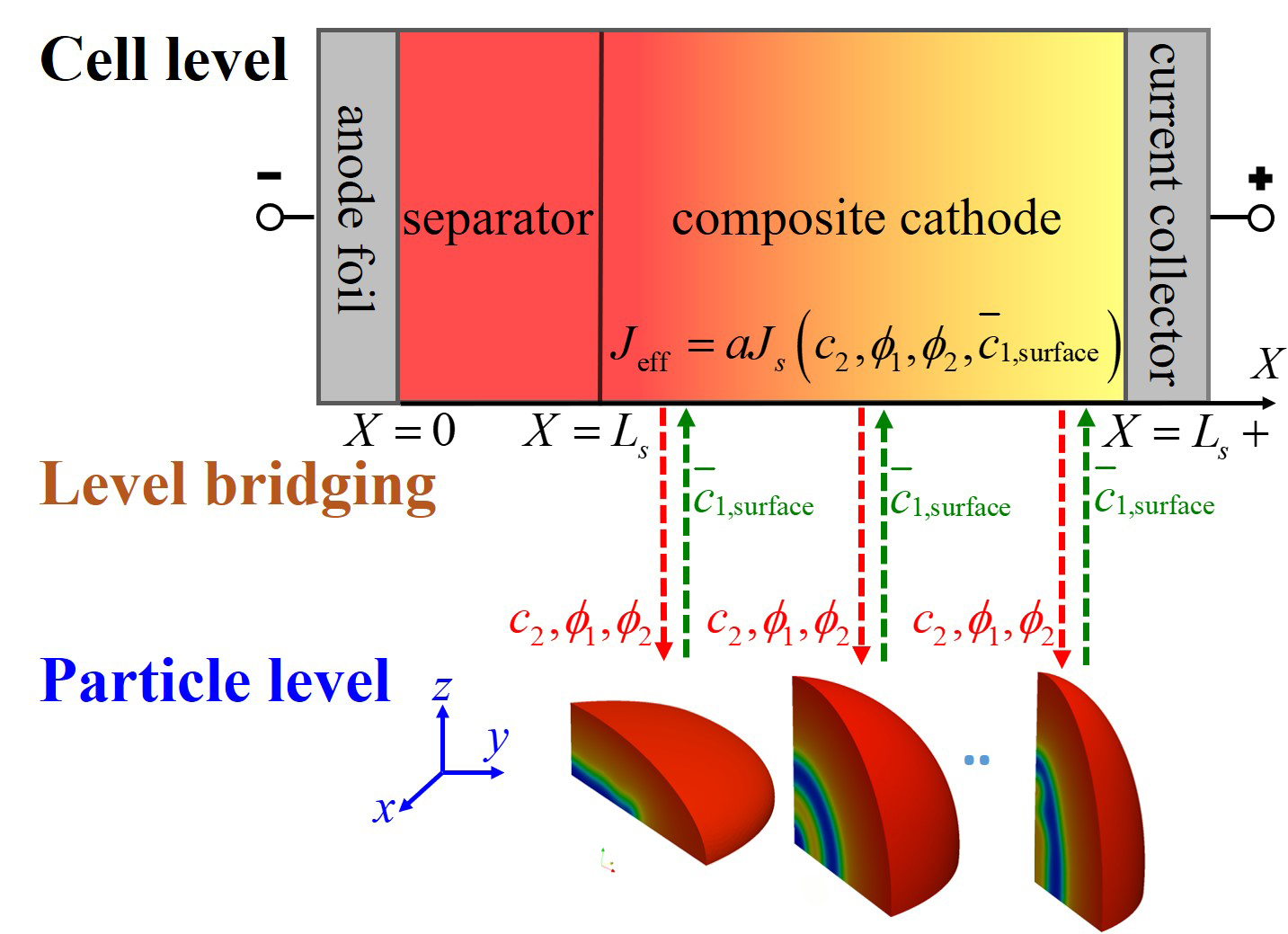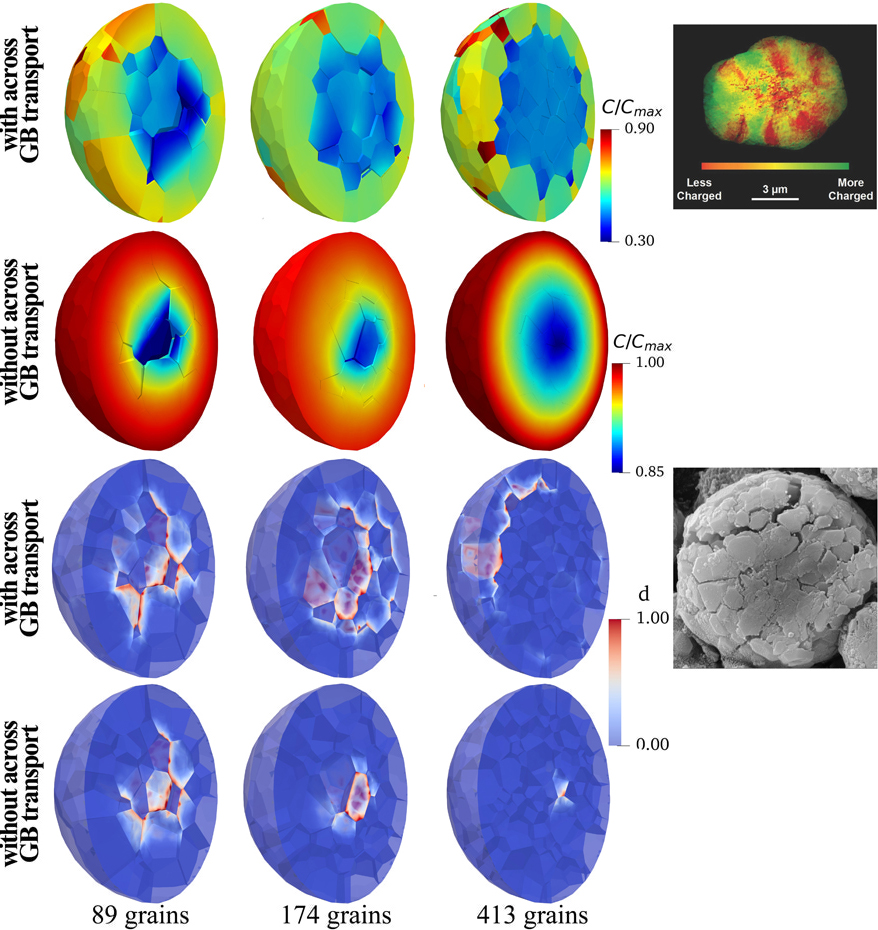A chemo-mechanical phase-field model has been accepted by 'Acta Materialia'
In this study, we have developed a thermodynamically consistent chemo-mechanical phase-field model. Wherein the experimental parameters and ThermoCalc’s database have both been utilized to calibrate the system’s free energy of the $\ce{FeO}$ material. Moreover, both the chemical process and elasto-plastic deformation contribution have been taken into consideration. Later, this model has been successfully applied to examine the chemo-mechanical interaction in the hydrogen-based direct reduction of iron oxide (HyDRI) process. According to the results of the simulation, the phase transformation from $\ce{FeO}$ to $\ce{Fe}$ can cause significant volume shrinkage. This significant volume change can lead to high stresses, which in turn can affect the phase transformation and regulate the reduction degree profile.
The following figure shows the oxygen distribution, the related phase distribution, as well as stresses for the $\ce{FeO}$ sample in HyDRI process.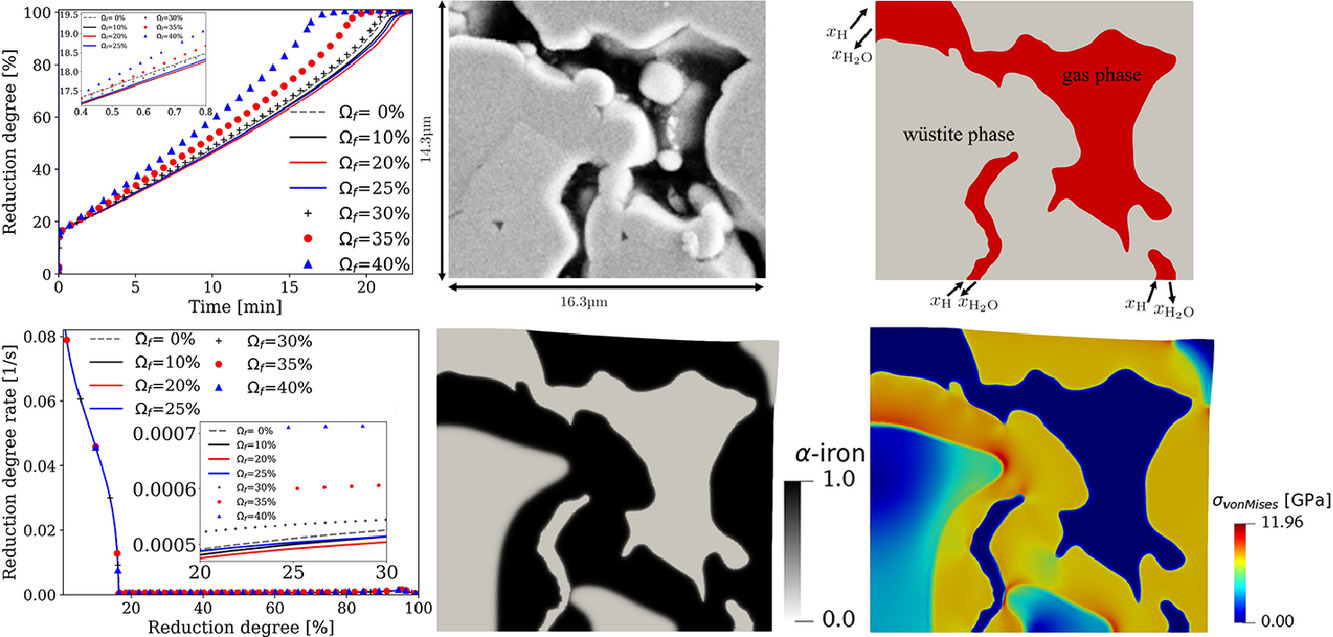
For more details, one is referred to My-Acta-2022.
